Netaji died in 1945: 5 pieces of clinching evidence given by UK website

"I would like to sleep a while."
These were the ominous last words spoken by Netaji Subhas Chandra Bose on the night of 18 August, 1945 at Nanmon Military Hospital in Taihoku (Taipei). As per latest details released by journalist and Netaji's grandnephew Ashis Ray for a UK-based website, at about 11 pm on the fateful night, hours after the Taipei plane crash, Bose succumbed to the burn injuries he had sustained.
The website, http://www.bosefiles.info/ that has been chronicling Netaji's life and piecing together the story of his death, released an array of testimonies to prove that the founder of the Indian National Army (INA) had indeed died on the same night the Japanese bomber plane crashed.
Also read: Netaji files reveal: Bose did suffer burns in Taiwan plane crash
Five witnesses who have been quoted - which include Netaji's close associate, two Japanese doctors, an interpreter and a Taiwanese nurse - corroborated that he died on 18 August 1945 following a plane crash on the outskirts of an airfield in Taipei.
Here's a detailed look at the testimonies given by people who surrounded Netaji during his last moments:
1. Statement of Colonel Habibur Rehman
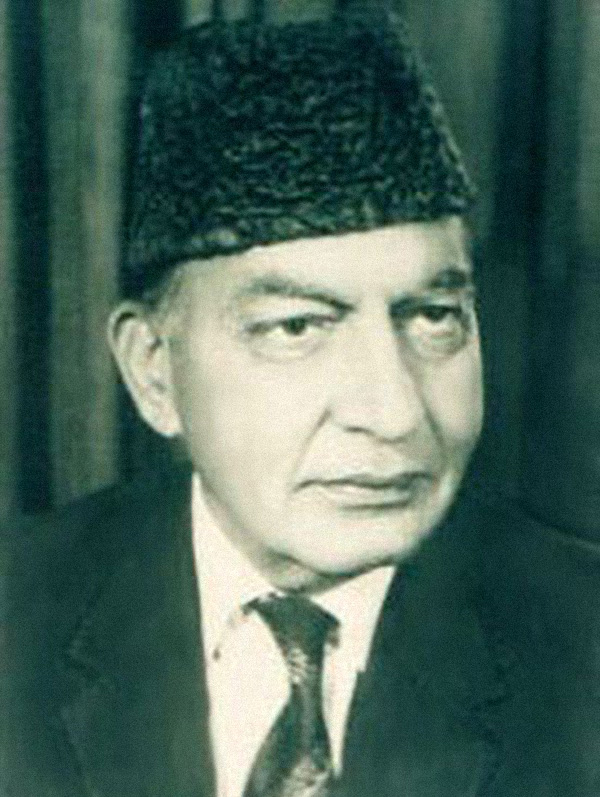
The website released the statement given by Netaji's trusted aide Colonel Habibur Rehman, who survived the crash. He came from Pakistan to testify to the 1956 Netaji Inquiry Committee headed by Major General Shah Nawaz Khan.
Here are some key excerpts from his statement in which he recounts the circumstances that led to Netaji's death:
- "At the time of the accident Netaji's position in the aeroplane was as follows: Immediately behind the pilot was seated one Japanese officer and behind him on the left side was Netaji. On his immediate right was the petrol tank. I was behind Netaji."
- "Netaji got out of the plane from the left side from the front. I followed him. We had to pass through the fire in doing so. As soon as I got out, I saw that Netaji's clothes were on fire, from head to foot. I rushed to help him to remove the clothes. By the time his clothes were removed he had sustained severe burns on his body in addition to serious head injuries received during the crash."
"Netaji was given immediate medical attention but his condition was very serious. Nippon medical authorities did all they could in his treatment but he unfortunately expired at 21-00 hrs (T.T.) the same day."
- Prior to his death Netaji told him: "I have fought to the last for India's independence and now am giving my life in the same attempt. Countrymen! Continue the independence fight. Before long India will be free. Long Live Azad Hind."
According to Rehman's statement Netaji's body was cremated on 22 August, 1945 at Taihoku under the arrangement of the Army authorities.
2. A telegram from an official of Hikari Kikan
According to http://www.bosefiles.info/, in September 1945, two intelligence teams from India led by police officers named Finney and Davis, assisted by HK Roy and KP De, went to Bangkok, Saigon and Taipei to investigate Bose's death. They seized a copy of a telegram from the Chief of Staff of the Japanese Southern Army to Hikari Kikan, a body set up to liaise between the Japanese Government and Bose's Provisional Government of Free India.
Using the code 'T for Bose' the cable dated 20 August 1945 said: "T" while on his way to the capital (Tokyo), as a result of an accident to his aircraft at Taihoku (Japanese name for Taipei) at 1400 hours on the 18 August was seriously injured and died at midnight on the same date."
3. An interview given by the nurse who treated Netaji, to an Indian journalist
The website refers to the journalistic investigations done by Harin Shah, who worked for Mumbai's Free Press Journal, to reconstruct Netaji's death in 1945. In September 1946, he visited Taipei and interviewed several people who had first-hand knowledge of the accident and the consequent demise of Bose.
Among those documents one was an interview with Tsan Pi Sha, a nurse at Nanmon Military Hospital, where Netaji breathed his last. Shah reproduced in his book Verdict From Formosa (which was the Japanese name for Taiwan) his interview where Sha is quoted as saying:
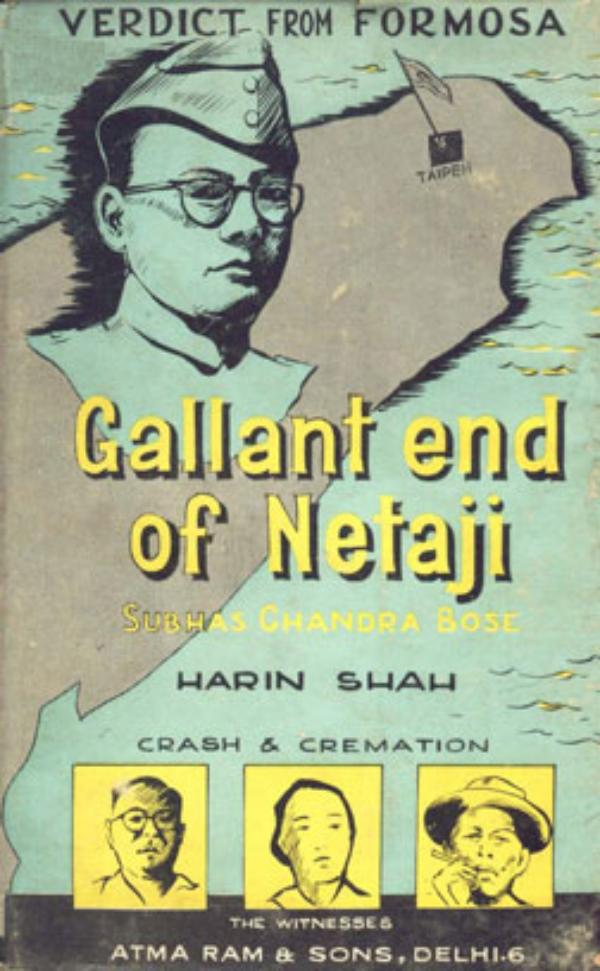
"He died here. I was by his side... He died on 18 August last year (1945), (Subhas) Chandra Bose."
She added: "I am a surgical nurse and took care of him till he died...I was instructed to apply olive oil all over his body and that I did."
She further continued: "Whenever he regained briefly his consciousness, he felt thirsty. With slight groaning, he would ask for water. I gave him water several times."
Wanting to be doubly certain, Shah asked: "So you definitely know that he is dead?" She replied, according to Shah, with a tone of rebuke: "Yes, he died. I have told everything about it. I can prove that he died."
4. Dr Yoshimi's statements and interviews:

Dr Taneyoshi Yoshimi (second from right) with Ashis Ray (third from right) during the latter's interview of the former at Miyazaki, Japan in 1995. Source: http://www.bosefiles.info/
Dr Yoshimi treated Netaji at the Nanmon Military Hospital. According to the website, the first of several testimonies provided by Dr Yoshimi was on 19 October 1946 at Stanley Gaol in Hong Kong, where he was imprisoned by British authorities after World War 2. This was recorded by Captain Alfred Turner of the War Crimes Liaison Section of Taiwan. He has also appeared before both the Shah Nawaz Committee as well as the 1974 Justice G D Khosla Commission, set up to examine the matter of Netaji's death.
In his statement to the British authorities he is quoted as giving graphic description of the injuries suffered by Netaji:
"When he was laid on the bed (of the hospital), I personally cleaned his (Bose's) injuries with oils and dressed them. He was suffering from extensive burns over the whole of his body, though the most serious were those on his head, chest and thighs. There was very little left on his head in the way of hair or other identification marks."
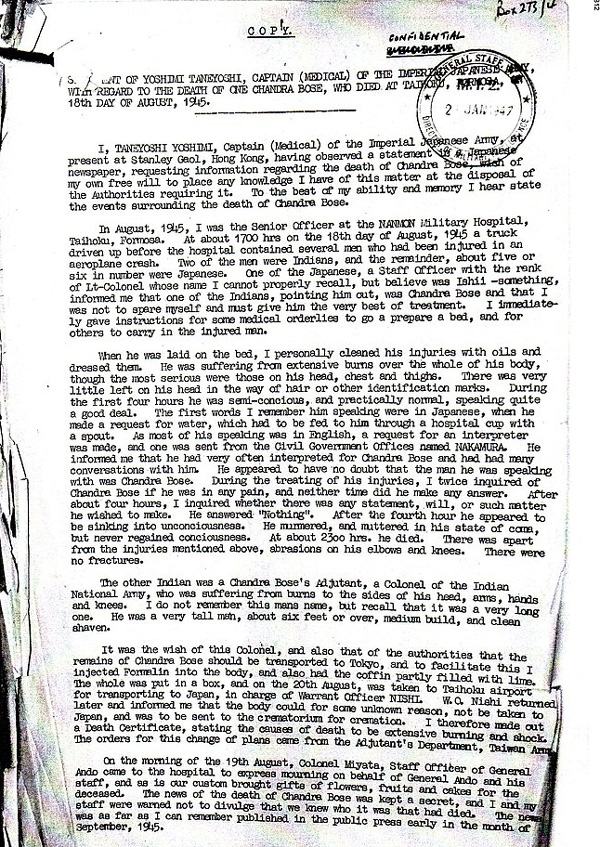
Dr Taneyoshi Yoshimi's 1946 statement. Source: http://www.bosefiles.info/
"After the fourth hour (following his admission to the hospital) he appeared to be sinking into unconsciousness. He murmured and muttered in his state of coma, but never regained consciousness. At about 2300 hours he died."
In an interview to Ashis Ray, creator of www.bosefiles.info, given in 1995, Dr Yoshini recalls the last words spoken by Netaji.
He narrated to Ray: "A lieutenant called Nonomiya told me this is Mr Chandra Bose, a very important person, and that I should save his life at any cost. That's how I knew who he (Bose) was."
When it became obvious to Yoshini that his condition was sinking, he asked Bose: "What can I do for you?"
Bose replied: "I feel as if blood is rushing to my head. I would like to sleep a while." Dr Yoshimi gave him an injection. After some time, he was no more.
5. Statement by Netaji's Japanese interpreter Nakamura's before the 1956 Netaji inquiry committee:
Nakamura was an interpreter who had worked for Bose during his visits to Taipei in 1943 and 1944. He also acted as an interpreter between Dr Yoshimi and Bose. He deposed before the 1956 Inquiry Committee also known as Shah Nawaz Khan Committee - the first effort made by the Indian government to investigate Netaji's death.
He gave several details to the members of the committee- Shah Nawaz Khan, MP. Suresh Chandra Bose, elder brother of Netaji Subhas Chandra Bose and SN Maitra, Chief Commissioner, Andaman and Nicobar Islands that confirmed that Netaji had indeed died in the aftermath of the fateful crash.
Also read: How the BJP lost the battle of appropriating Netaji's legacy to Mamata
Describing the his last moments, Nakamura says that there was "not a word of complaint either of pain or suffering from his lips...This composure of Netaji (Bose) surprised all of us". He went on to say that after Bose died, the Japanese officers in the room stood in one line and saluted his body.
Does this give us a sense of closure about Netaji's death?
Well, most of the details put out by the website was already in the public domain. What the website must be credited with is releasing all documents in a coherent manner, and also giving context to a new generation that hasn't heard first hand about Netaji's heroic attempt at winning independence for India.
On whether these findings can be taken as a final word on the Netaji's death, the creator of the website says: "www.bosefiles.info intends to unfold in a serialised manner the facts connected with the last days of Subhas Bose and leave it to people anywhere in the world interested in him to judge for themselves."
Meanwhile, with the West Bengal elections in just four months, the issue is now taking a political turn. Chief Minister Mamata Banerjee, who pulled an ace by releasing 64 files related to Netaji in her government's possession last September, has already declared that she didn't believe the freedom fighter died in the air crash in Taihoku in August 1945.
She also insists that the secret files in Russia could help solve the the mystery of the leader's disappearance. What is also significant is that she said this marking the 75th anniversary of what is known as Netaji's "great escape" from house arrest by Britishers in Kolkata on 16 January, 1941. She was spotted with niece of Netaji Subash Chandra Bose Krishna Bose at the event.
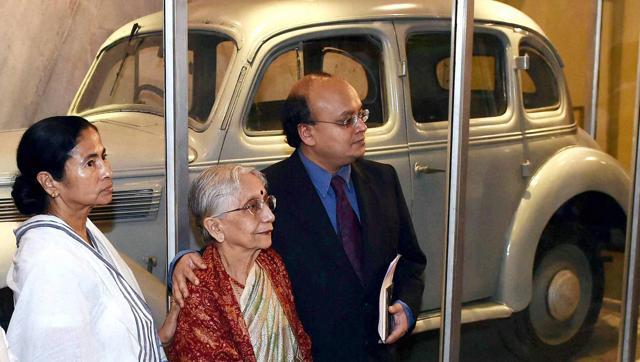
Mamata Banerjee with Krishna Bose, niece of Netaji Subash Chandra Bose standing near Netaji's car at a programme to mark the 75th anniversary of the freedom fighter's "great escape". Photo: PTI
As of now, all eyes are on the Netaji files declassified by the NDA government. The declassification process will begin on 23 January, Netaji's 119th birth anniversary.
Also read: UK based website rejects claims of Netaji's presence in China after 1945

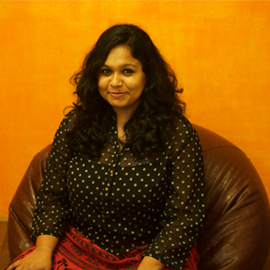




![BJP's Kapil Mishra recreates Shankar Mahadevan’s ‘Breathless’ song to highlight Delhi pollution [WATCH] BJP's Kapil Mishra recreates Shankar Mahadevan’s ‘Breathless’ song to highlight Delhi pollution [WATCH]](https://images.catchnews.com/upload/2022/11/03/kapil-mishra_240884_300x172.png)

![Anupam Kher shares pictures of his toned body on 67th birthday [MUST SEE] Anupam Kher shares pictures of his toned body on 67th birthday [MUST SEE]](https://images.catchnews.com/upload/2022/03/07/Anupam_kher_231145_300x172.jpg)






